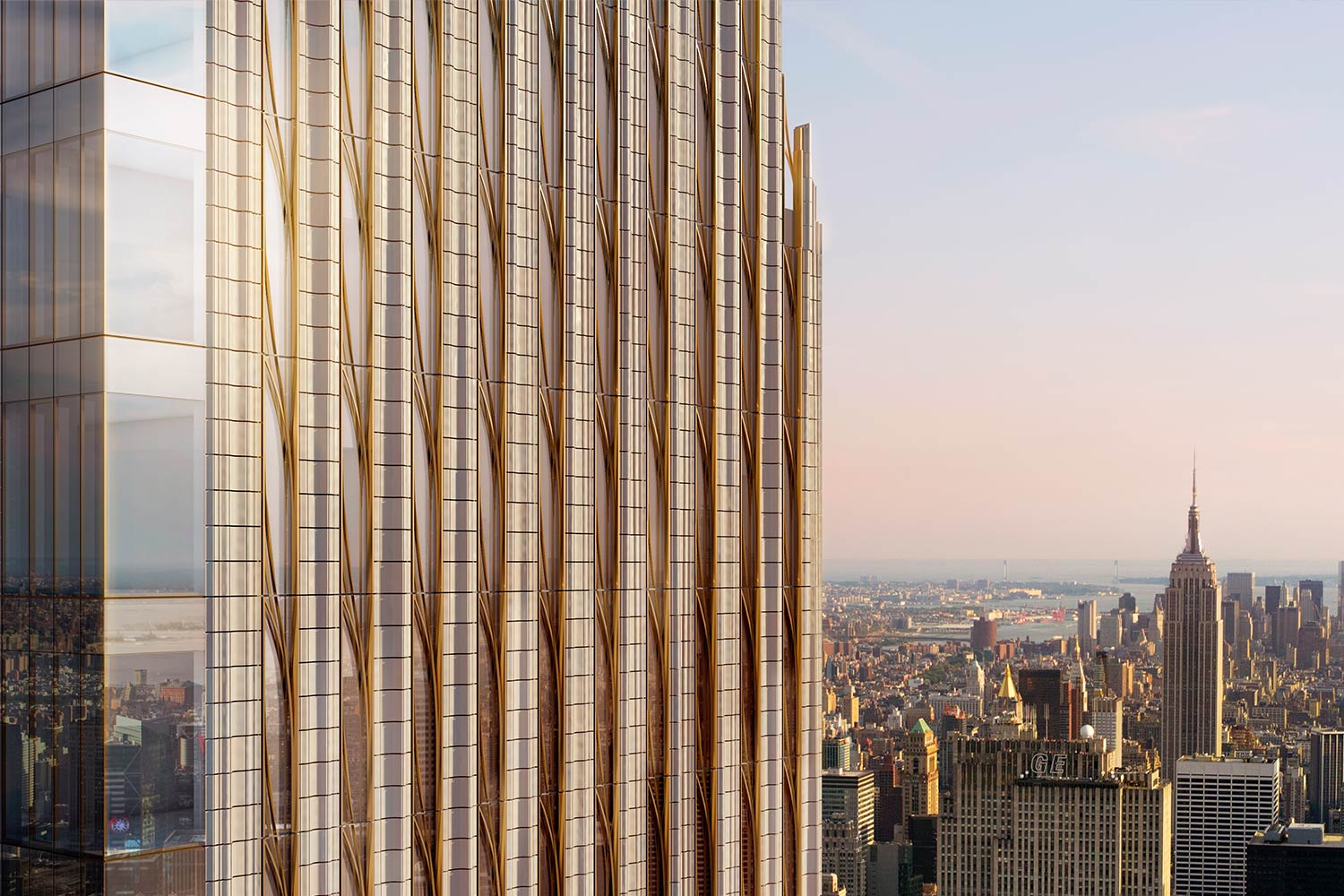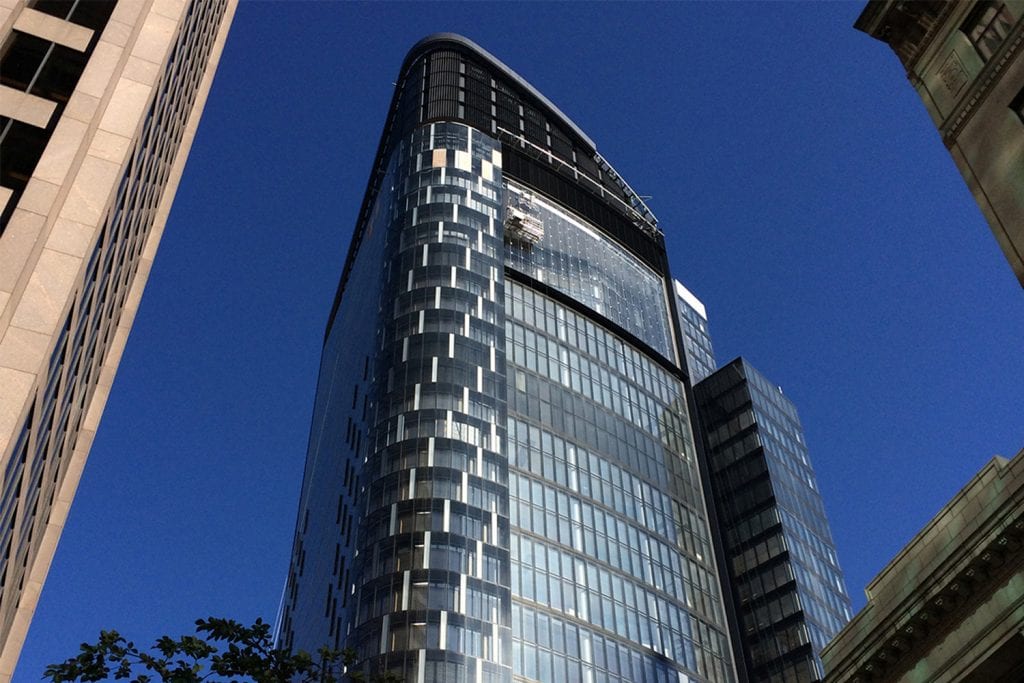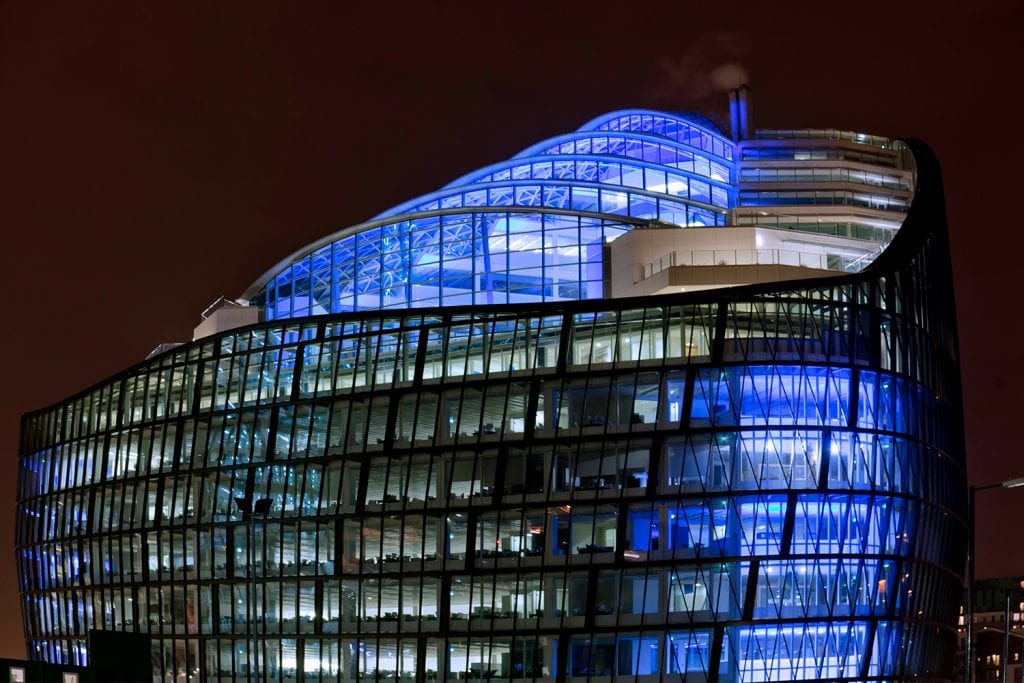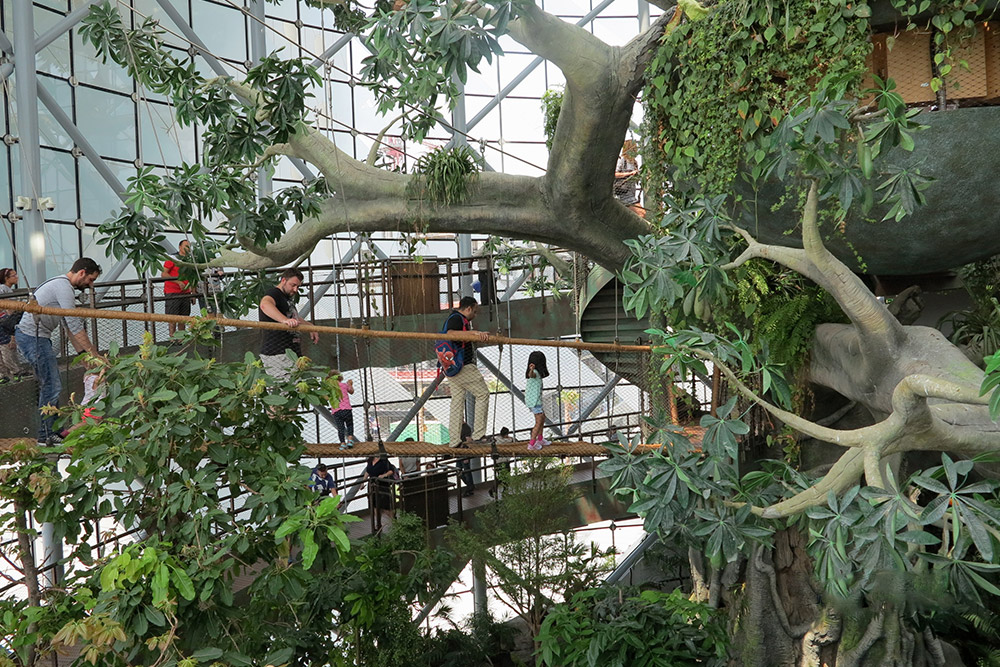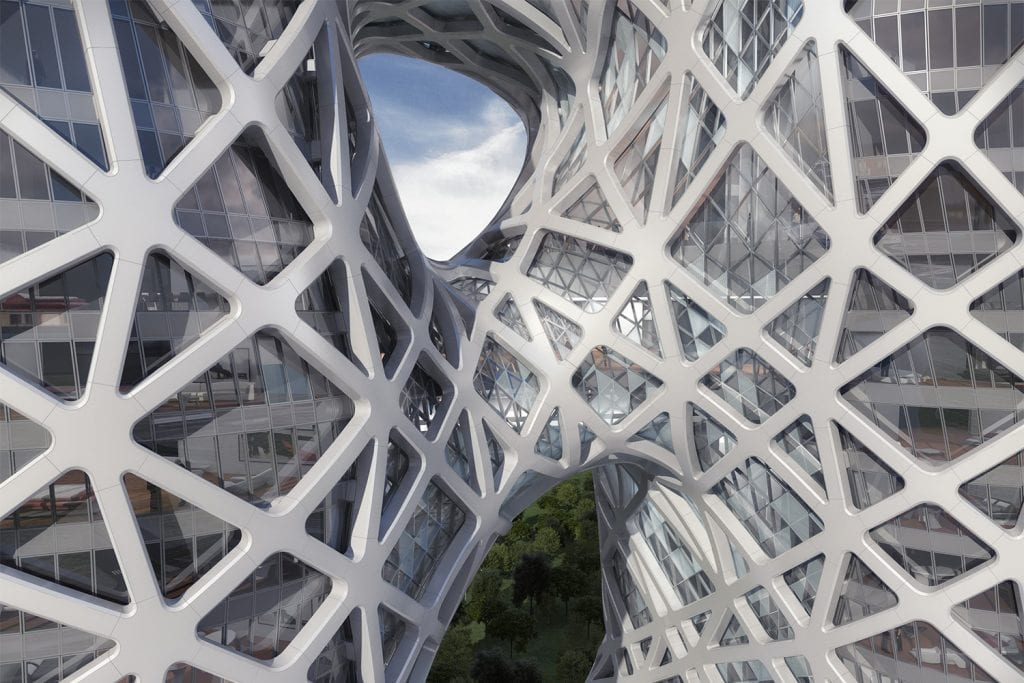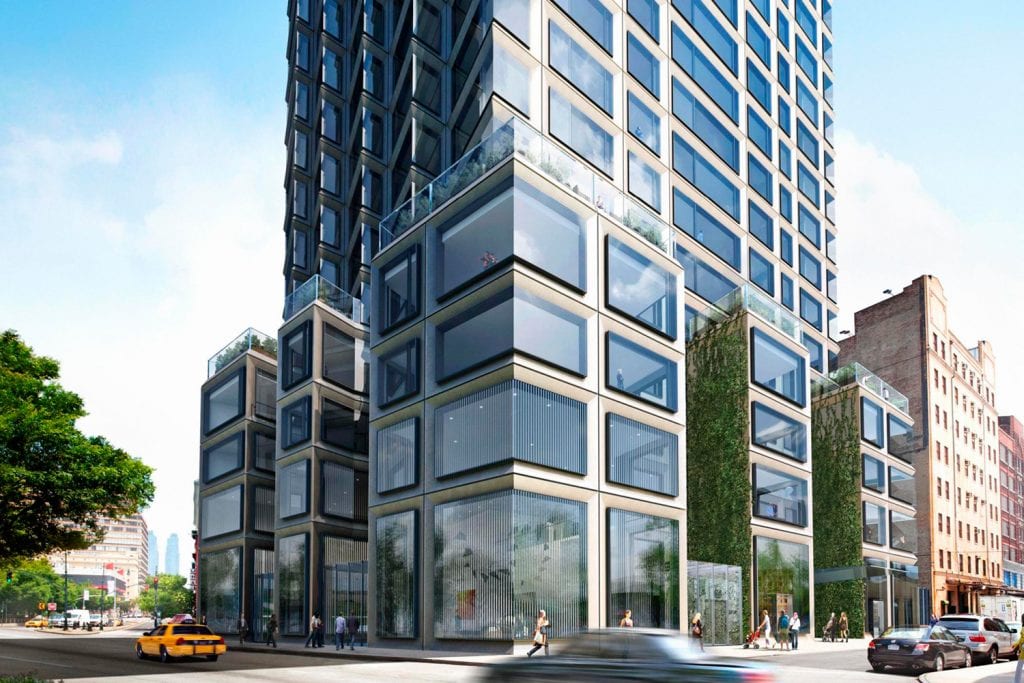Old World Materials Reach New Heights
The American Copper Buildings were recently profiled in a New York Times’ series on resilient design, but it is the buildings’ striking form and copper facades that command popular attention.
Designed by SHoP for JDS Development Group, the luxury apartments comprise of two canted towers rising to 41 and 48 stories and connected by a sky bridge.

The copper facades take an old world material to new heights, adding to the development’s air of luxury. As the facade and MEP engineers for the development, Buro Happold resolved the many nuanced challenges encountered when applying copper at this scale.
In proposing a copper facade, SHoP embraced the idea of a material richness deepened by a naturally changing patina over decades. However, realizing this vision wasn’t simply a matter of letting nature take its course. One of the most expansive copper facades worldwide, the towers required 1.5 million pounds of copper clad panels that were left untreated to allow the copper to go through a natural oxidation process to develop a beautiful green patina over time. In addition to overseeing the composition and thickness of the copper panels, the team developed packing and shipping protocols to ensure a uniform finish.

At 111 W57th Street, another JDS residential development, SHoP and Buro Happold are crafting a dramatic nod to New York’s historic terra-cotta clad towers. Using advanced modeling tools, the team is adapting the traditions of terra-cotta and bronze to a slender tower rising to 1,400 feet above midtown Manhattan.
When old world materials meet 21st century craft, the sky’s the limit.
